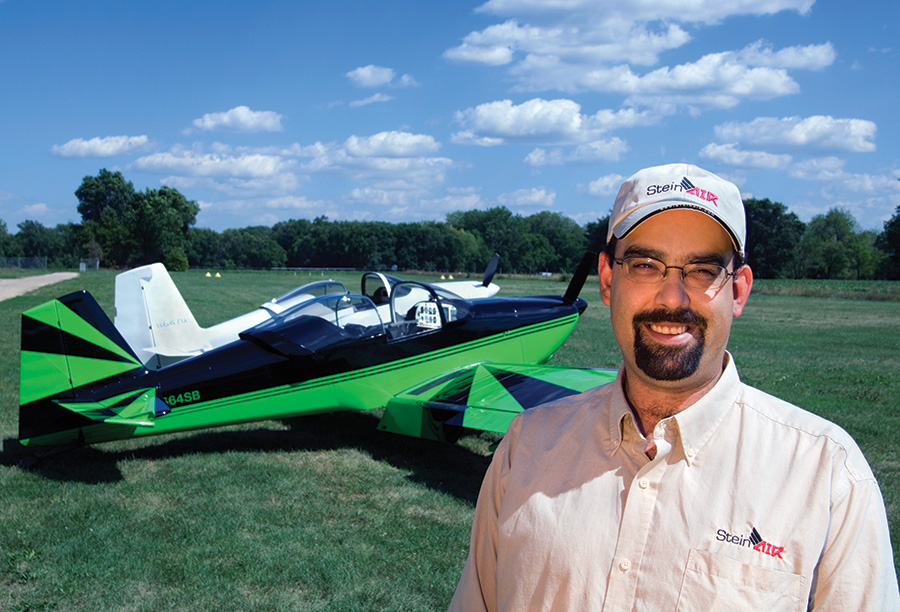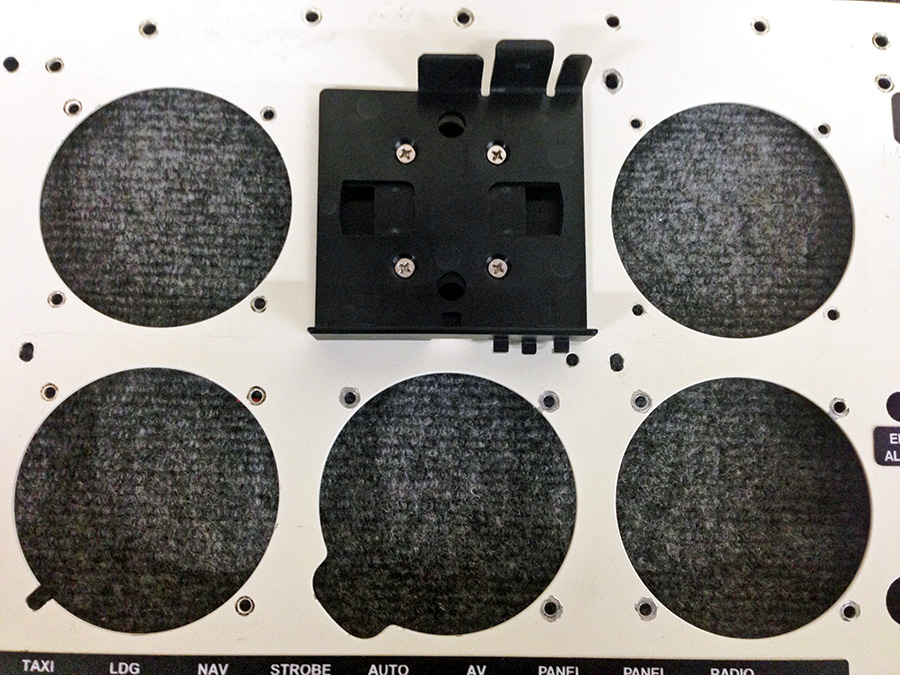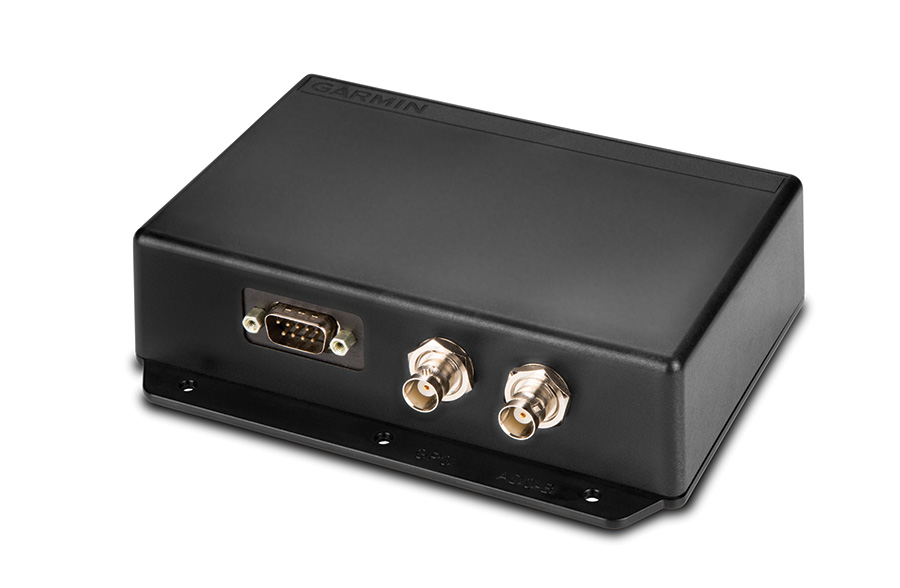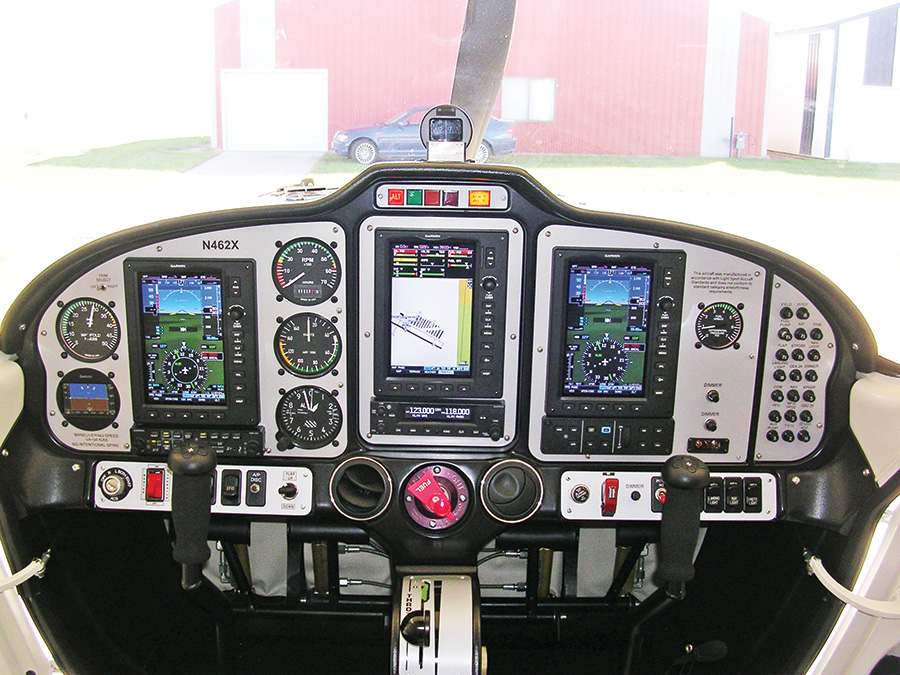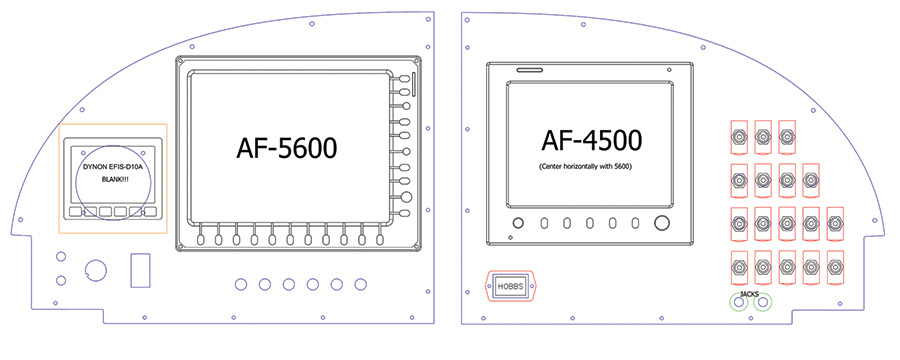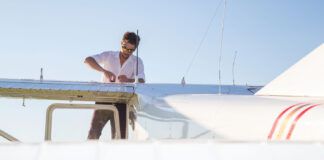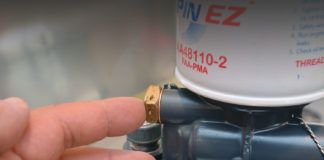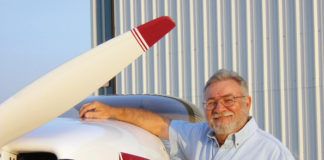Building an airplane is just part of the fun for homebuilders. After building comes flying, then maintaining, and eventually upgrading—that is if you keep the airplane long enough before becoming a repeat offender and deciding to build the next one.
After some period of time, there will no doubt be a number of widgets, gadgets and other items that catch your eye. These can range from the rather simple and mundane to the latest and greatest large-sized touchscreen EFIS. We are lucky that in this industry, we’ve actually seen a unique phenomenon: the price of avionics going down, while functionality and features increase at a very rapid pace.
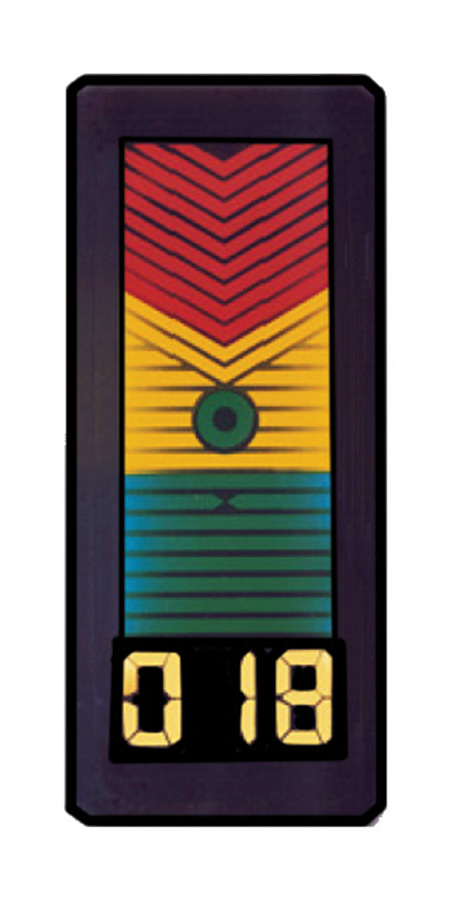
Adding an angle of attack system is a common upgrade that can be done in a weekend of concentrated work.
Realizing that avionics constantly change, you likely installed something that you were satisfied with at the time you built the plane. But now that you’ve flown the airplane awhile, there’s a good chance you’re ready for an upgrade. Over the next several months we will explore the sometimes simple, and occasionally challenging, process of upgrading the instrument panel in your aircraft.
This month we’ll look at the first step. We’ll simply call this, “Where do I start?”
There are really only three main reasons for upgrading your panel or avionics. First, the equipment may be outdated. Second you want to take advantage of newer technology, added functionality, new features, or you just want it! Third, you may be upgrading from VFR to IFR. Considering that equipment isn’t truly and absolutely outdated until (a) it is no longer legal, or (b) it no longer functions as needed, or (c) it costs more to fix/maintain than replacing with new, it’s my experience that most of us fall into the second or third category.
There are two things that absolutely must be done before anything else. First, you must decide what you’re going to upgrade, then you need to decide how much of it you’re going to change. Those two items will drive the entire project. Deciding what to upgrade is sometimes easy and sometimes difficult. I’ve broken this down into a couple different areas, which range from simple to more difficult.
Major or Minor Surgery?
On the simple side of things, it could be easy to remove a vacuum system and replace it with an EFIS like the small Dynon, GRT, or MGL units. This is a very big bang for the buck, as you actually save weight, along with gaining a pile of functionality. It’s a relatively simple upgrade to remove a round instrument and put another into the same hole. Wiring is minimal (typically power, ground, and maybe an audio wire) and simple pitot/static connections are made. This type of upgrade can typically be done in the span of a long weekend, or a couple weekends. Remember, removing the old stuff and plugging holes or vacuum pump drives can take a number of hours on its own, so take that into account.
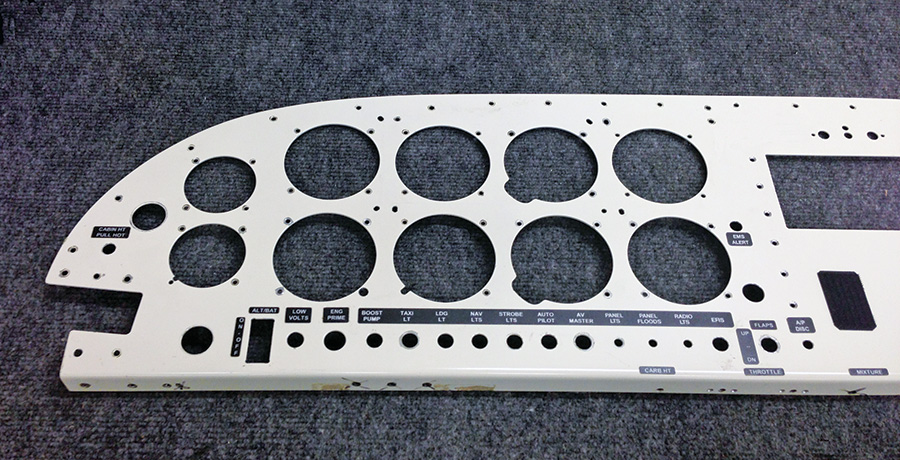
One of the simplest upgrades you can make to an airplane with steam gauges is the addition of Dynon D1 portable EFIS. Simply remove a round gauge, clip in the mounting bracket, attach the D1, and you’re done!
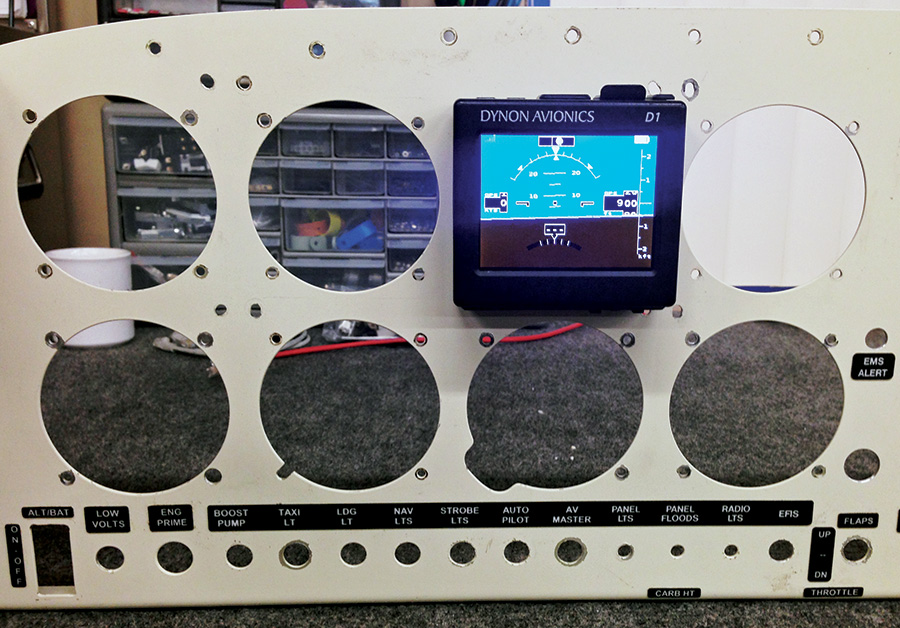
One of the simplest upgrades you can make to an airplane with steam gauges is the addition of Dynon D1 portable EFIS. Simply remove a round gauge, clip in the mounting bracket, attach the D1, and you’re done!
Other relatively simple and popular upgrades are trading up to a new mode S/ES transponder, which gives you part of the solution to utilize ADS-B in your aircraft. There are a number of alternatives, depending on what you currently have installed, but it could be as simple as sending your current transponder to the manufacturer for an upgrade, placing something else into the same tray with minimal wiring changes, or adding a completely new transponder in place of an old one. Any of the aforementioned options are yet again typically a long weekend project.
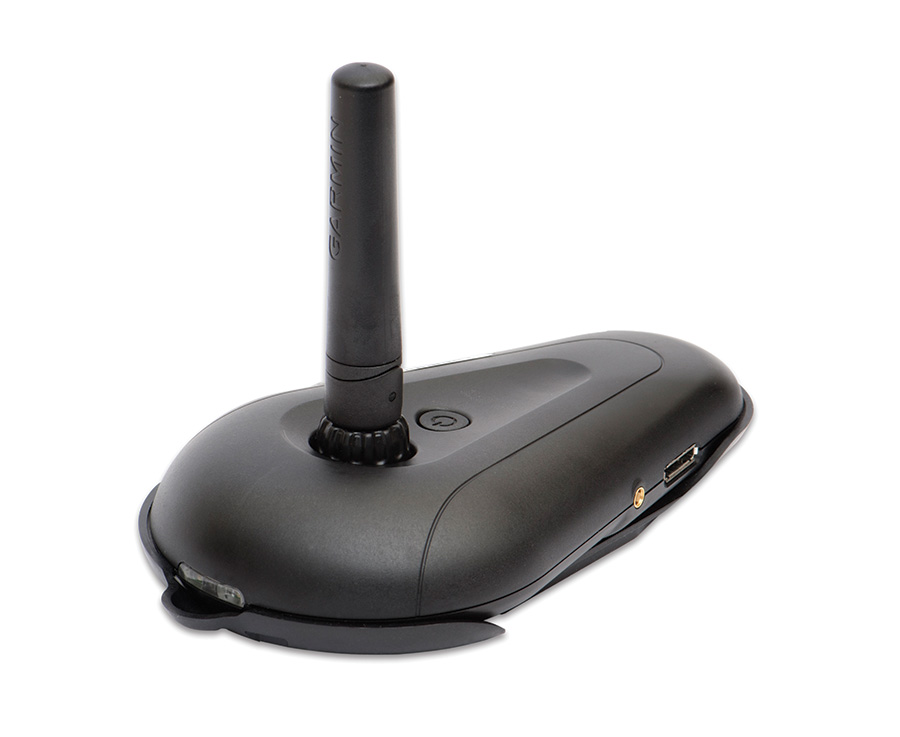
You can add ADS-B capability to a typical EFIS with either a portable Garmin unit like the GDL 39 or the remote-mounted version of the same box, the GDL 39r.
In addition to the transponder upgrade, adding an ADS-B receiver to your plane is another popular upgrade that is relatively painless and not terribly expensive (in the world of avionics anyway!). Remember that in order to add a receiver, you’ll also need to add another antenna to the bottom of the aircraft. Typically it’s similar or identical to the transponder antenna you already have on the plane, but located a distance from it. You’ll need to run some basic coax cable to that antenna, mount the box somewhere in the plane, and hook up some basic wires (power, ground, typically a couple communication interface lines, and probably a GPS line). There are portable units out there which take even less work—sometimes they are as simple as plugging in a power plug (or wiring it to ship’s power) and using wireless/Bluetooth to your GPS or tablet.
Other popular upgrades that fall into the minor category are things like adding a smoke system or autopilot, mounting a tablet to the face of the panel or side of the plane, upgrading your audio panel or intercom, swapping out incandescent navigation/landing lights for a newer LED type, adding a safety trim device, and installing a simple EFIS like the Dynon D1/D2/D6/D10 or Aspen Avionics EFIS.
Once you’ve determined that your upgrade will involve either a little bit of stuff or a lot of stuff, you need to get down to the nitty gritty of exactly what you’re going to do. If all you want is to replace your attitude indicator and directional gyro with something digital, that would be considered minor surgery. If you’ve decided to rip out the entire panel of round analog stuff and go with new flat screen digital panels, that would be considered major surgery! Many times the line between minor and major is rather gray, but basically if you plan on doing anything other than the simplest “remove and replace,” most of the time it’s just as easy to have a new panel cut (only hundreds of dollars from many shops) and replace the entire thing in one fell swoop. We’ll discuss the particulars of that process in our next article.
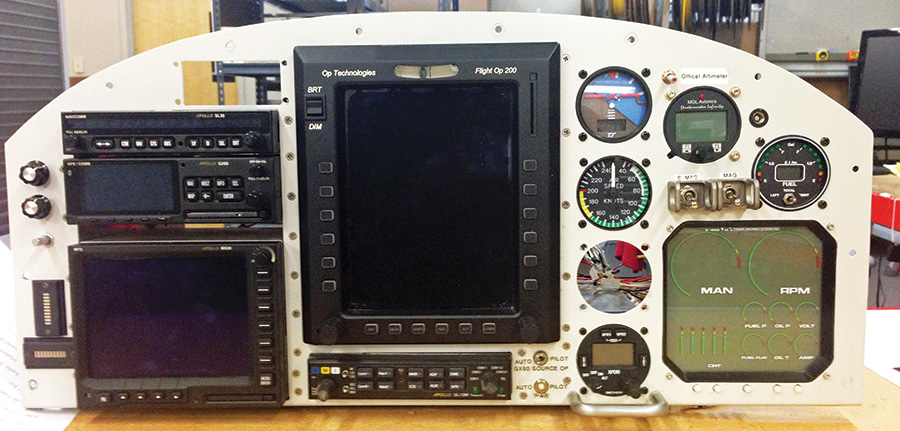
Some aircraft are designed with removable instrument panels. This RV-8 panel can be removed in about five minutes and either upgraded or replaced with a new version with new goodies for the pilot.
Which Stuff?
By now you probably know if your project is going to be a weekend job or something much more involved. The next step is figuring out exactly which equipment to purchase. There is no absolute answer, but there are some general guidelines to assist you with this task.
Most people want to know which brand of equipment is best. There’s no absolute answer for all budgets and airplanes, but I can say that the most popular EFIS systems on the market right now (at least for sport aircraft) are Advanced Flight Systems, Dynon Avionics, Garmin, Grand Rapids Technologies, and MGL. The first four make up the bulk of the market in the U.S., but MGL is quite popular abroad.
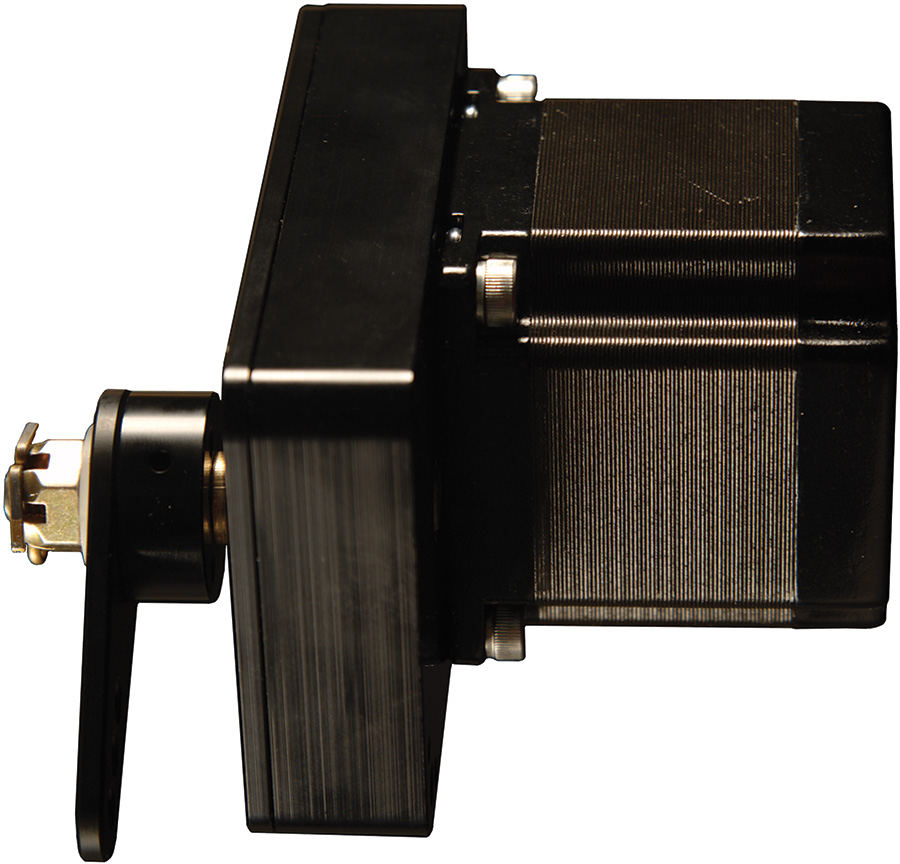
Although many modern digital autopilot servos look alike, and many can use the same mounting brackets, they are all electronically unique and must be used with the specific company’s controller or EFIS.
One thing to consider is what brand of equipment is already installed in your plane. For example, if you already have some digital instruments (it’s likely you have at least some digital engine instruments) of a certain brand, it makes sense to look at the same brand for upgrading since you’ll likely be able to use many of the same probes and sensors, wiring, and even connections. If you have something like a GRT EIS module, it will easily attach to a new GRT EFIS. If you have an older generation Dynon EMS, the probes/sesnsors/wiring will easily plug into their new system, as well as equipment from AFS. The same goes for MGL and even some Garmin equipment.
If you have an autopilot installed, some brands will work with existing servos, but many will not. (You usually can’t mix and match servos from one company with an EFIS or controller from a different company). Standalone autopilots like TruTrak and Trio will interface with all brands previously mentioned except Dynon. Most companies are now offering their own integrated autopilots, so keeping an existing autopilot, upgrading an existing autopilot, or replacing an existing autopilot are more options to consider.
If you have a GPS (portable or panel mount) installed, it will likely interface with any popular EFIS. As far as radios go, if you have anything that is older technology than a radio like an SL30/40 (Narco, King, and TKM come to mind, but there are others), it’s likely it can’t be connected to your EFIS. In this situation, a radio upgrade might be considered a valuable addition.
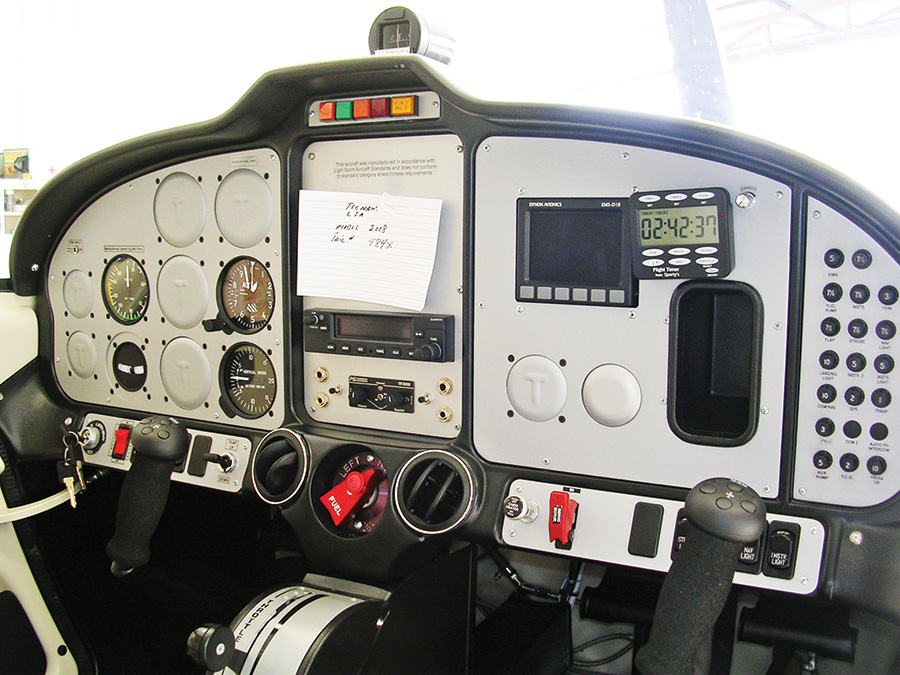
Updating an instrument panel with a modular design, as in this Tecnam, is structurally simple and can greatly increase the utility and capability of an aircraft.
For audio panels, there are really only two viable choices in the market. PS Engineering has long been the premium leader in this space, but Garmin also has some new offerings that are quite competitive. Regarding intercoms, the choices are much broader and there are many options, depending on what your upgrade entails. I might add that if your upgrade includes more than one radio, you should also consider getting a full-blown audio panel. Yes, you can kludge together a simple intercom with various switches and wiring to sort of make it work, but all things considered, the audio panel is a better investment of your money and time if you have more than one radio.
The last consideration for specific equipment depends on exactly what you are going to do with the aircraft. A very popular upgrade is to add something like a certified WAAS GPS to make the aircraft IFR legal. In order to do that, you must also add equipment that will work well with it. That means you can’t use the smallest and cheapest boxes (like the Dynon D1/D2) because interfacing those boxes will either make things difficult to use, or it can’t be done at all. The same goes for full-functioning autopilots (if you want them to do something like fly a coupled approach using the aforementioned IFR box), ADS-B receivers, Mode S transponders, NAV radios, etc.
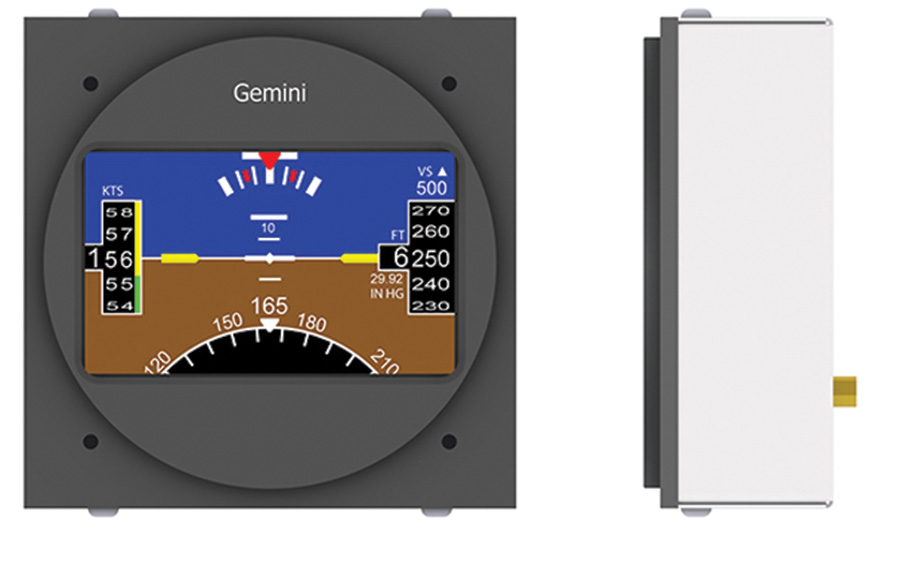
The Gemini PFD from Tru Trak is but one of several compact “six-pack replacements” available in today’s market. Dynon, GRT and MGL all have simple electronic gyro and air data packages that provide a quick and simple upgrade path for a dated panel. You’ll never have to buy a vacuum pump again.
How Much?
Now for the big question: How much? I’ll do the best I can to give you some basic swags as to what various upgrades might cost from a materials standpoint. Labor can range from zero (if you do it yourself) to many thousands if you hire it out. We’ll cover some of the DIY portions and possibilities in the next article.
Here are some popular upgrades and what a generalized budget might be. Prices listed are for new equipment; obviously you can occasionally find used equipment for less.
- ADS-B Receiver: $1000 + plus $50-$150 for cables/antennas.
- Transponder: Upgrade/replacement to mode S/ES. $1200 to $2500.
- IFR-Certified WAAS GPS: GPS only, $4000 to $6000 depending on brand.
- Full IFR Navigator: Upgrade/addition to Garmin 430W, GTN-650/750 or Avidyne. $7000 to $14,000.
- Autopilot: Single axis from $750, dual axis from $1650 to $3000.
- Simple EFIS: Plug into standard 3-inch instrument cutout. $1200 to $2200.
- Full-Featured Large-Screen EFIS: With synthetic terrain, GPS, EIS. $4000 to $5000 single screen, $6500 to $12,000 dual screen.
- Additional COM Radio: $1200 to $1800. NAV/COM radio: $3500 to 4000.
- Audio Panel: Upgrade from intercom. $750 to $2500.
- Smoke System: $750 to $1000.
- Tablet Computer: $250-$800.
- New Panel: Custom cut. $150-$500.
Note that with all of the aforementioned upgrades, we did not include the price of any labor. If you do it yourself, labor can be greatly reduced. However, sometimes purchasing things like pre-fabricated wiring harnesses (from $100 to $2500) can be cheap insurance and save huge amounts of time. Labor for the physical installation provides the biggest return on your own sweat equity, and we’ll cover this topic in detail in future articles.
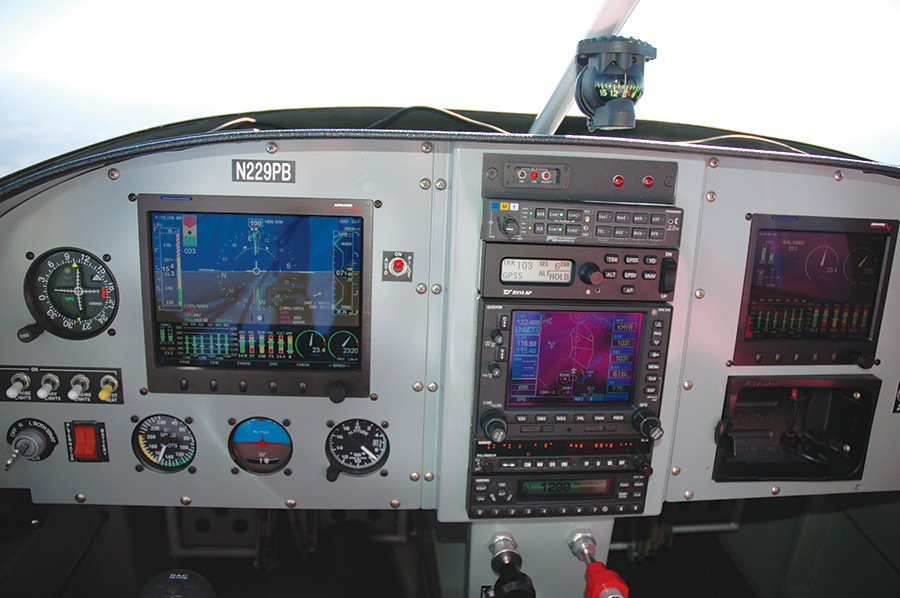
Upgrading to an entirely new panel, as in this RV-10, starts with laying out the new panel using either pencil and paper or a CAD program. A major panel upgrade can affect wiring throughout the airframe, and involve significant labor.
Upgrades are almost universally fun, sometimes challenging, but ultimately very rewarding. Even the smallest upgrade, like adding a Dynon D1 EFIS, can add value to your aircraft and reduce your workload, arguably making your job as a pilot easier and increasing safety.
Photos: Courtesy the manufacturers and Stein Bruch

